Known for being a fearsome crime boss, Ellsworth Raymond "Bumpy" Johnson ruled the Harlem neighborhood of New York City in the mid-20th century.
For more than 30 years, Bumpy Johnson was famous for being one of New York City’s most revered — and feared — crime bosses. His wife called him the “Harlem Godfather,” and for good reason.
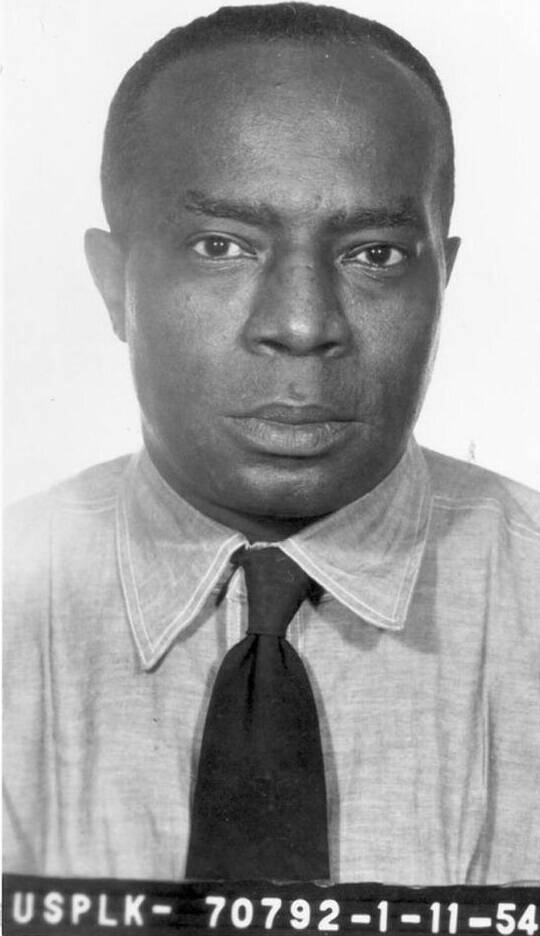
Records of the Bureau of Prisons/Wikimedia CommonsA mugshot of Bumpy Johnson, aka the Godfather of Harlem, at a federal penitentiary in Kansas. 1954.
Known for ruling Harlem with an iron fist, he dealt with anyone who dared challenge him in a brutal fashion. One rival named Ulysses Rollins caught the business end of Johnson’s switchblade 36 times in a single streetfight.
During another confrontation, Johnson saw Rollins in a dinner club and pounced on him with a blade. By the time Johnson was done with him, Rollins’ eyeball was left dangling from its socket. Johnson then proclaimed that he suddenly had a craving for spaghetti and meatballs.
However, Johnson was also known for being a gentleman who was always willing to help out the less fortunate members of his community. In addition, he garnered a reputation as a fashionable man about town who rubbed elbows with celebrities like Billie Holiday and Sugar Ray Robinson.
Whether it was celebrities — and even historical luminaries like Malcolm X — or everyday Harlemites, Bumpy Johnson was beloved, perhaps even more than he was feared. Upon his return to New York City in 1963 after serving time in Alcatraz, Johnson was met with an impromptu parade. The whole neighborhood wanted to welcome the Harlem Godfather back home.
The Early Life Of Bumpy Johnson
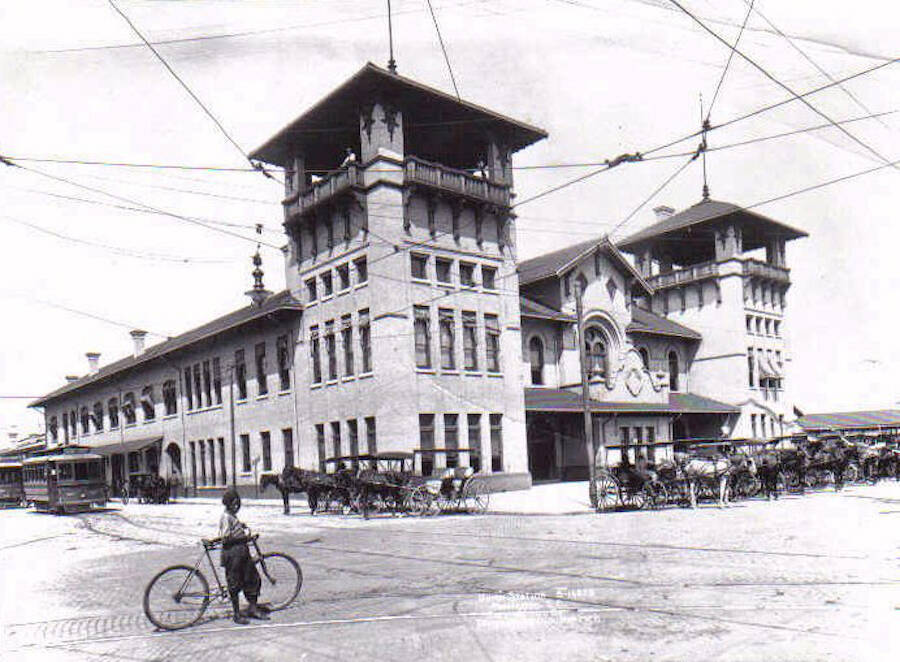
North Charleston/FlickrBumpy Johnson spent his early years in Charleston, South Carolina. Circa 1910.
Ellsworth Raymond Johnson was born in Charleston, South Carolina on October 31, 1905. Due to a slight deformation of his skull, he was given the nickname “Bumpy” at a young age — and it stuck.
When Johnson was 10 years old, his brother William was accused of killing a white man in Charleston. Fearing a reprisal, Johnson’s parents moved most of their seven children to Harlem, a haven for the Black community in the early 20th century. Once there, Johnson moved in with his sister.
Because of his bumpy head, thick Southern accent, and short stature, Johnson was picked on by local children. But this may be how his skills for a life of crime first developed: Instead of taking the hits and taunts, Johnson made a name for himself as a fighter who was not to be messed with.
He soon dropped out of high school, making money by pool hustling, selling newspapers, and sweeping the storefronts of restaurants with his gang of friends. This is how he met William “Bub” Hewlett, a gangster who took a liking to Johnson when he refused to back off of Bub’s storefront territory.
Bub, who saw the boy’s potential and appreciated his boldness, invited him into the business of offering physical protection to the high-profile numbers bankers in Harlem. And before long, Johnson became one of the most sought-after bodyguards in the neighborhood.
How The Future Crime Boss Entered The Gang Wars Of Harlem
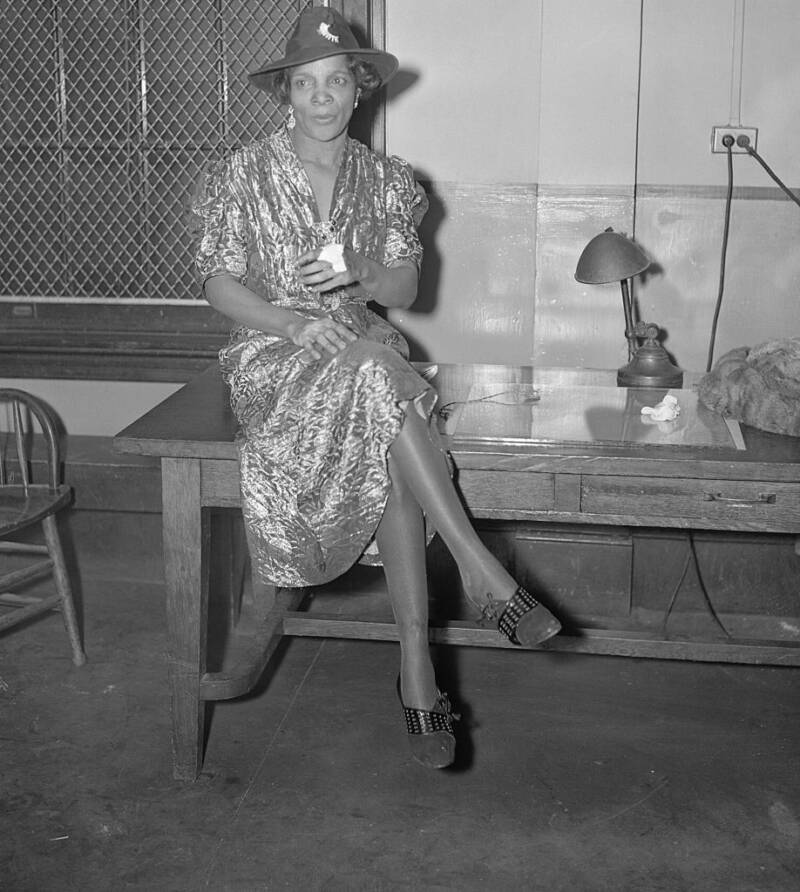
Wikimedia CommonsStephanie St. Clair, the “Numbers Queen of Harlem” who was once Bumpy Johnson’s partner in crime.
Bumpy Johnson’s criminal career soon flourished as he graduated to armed robbery, extortion, and pimping. But he wasn’t able to avoid punishment and was in and out of reform schools and prisons for much of his 20s.
After serving two and a half years on a grand larceny charge, Bumpy Johnson got out of prison in 1932 with no money or occupation. But once he was back on the streets of Harlem, he met Stephanie St. Clair.
At the time, St. Clair was the reigning queen of several criminal organizations across Harlem. She was the leader of a local gang, the 40 Thieves, and was also a key investor in the numbers rackets in the neighborhood.
St. Clair was certain that Bumpy Johnson would be her perfect partner in crime. She was impressed by his intelligence and the two quickly became fast friends despite their 20-year age difference (though some biographers peg her as being only 10 years his senior).

Wikimedia CommonsDutch Schultz, a German-Jewish mobster who battled St. Clair and Johnson.
He was her personal bodyguard, as well as her numbers runner and bookmaker. While she evaded the Mafia and waged war against German-Jewish mobster Dutch Schultz and his men, the 26-year-old Johnson committed a series of crimes — including murder — at her request.
As Johnson’s wife, Mayme, who married him in 1948, wrote in her biography of the crime boss, “Bumpy and his crew of nine waged a guerrilla war of sorts, and picking off Dutch Schultz’s men was easy since there were few other white men walking around Harlem during the day.”
By the end of the war, 40 people had been kidnapped or killed for their involvement. But these crimes did not end because of Johnson and his men. Instead, Schultz was ultimately killed by orders from Lucky Luciano, the infamous head of the Italian Mafia in New York.
This resulted in Johnson and Luciano making a deal: The Harlem bookmakers could retain their independence from the Italian mob as long as they agreed to pass along a cut of their profits.
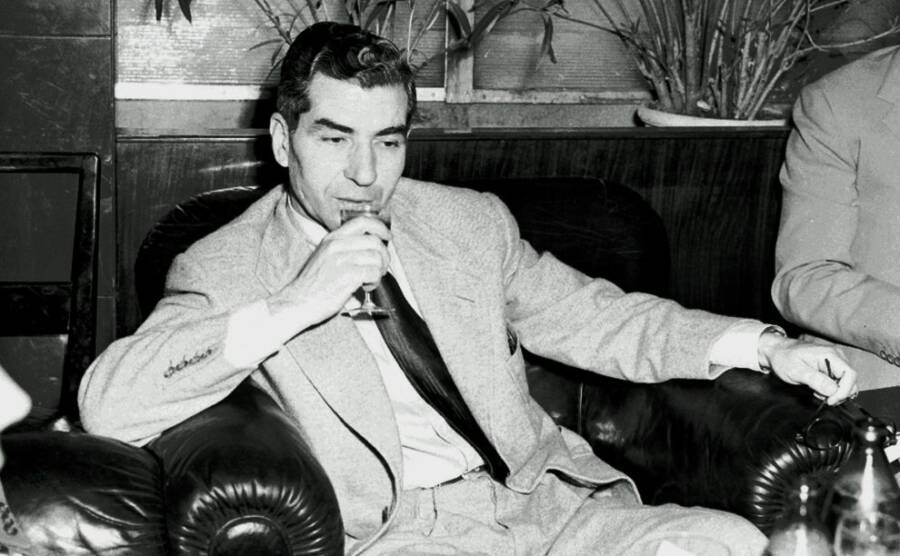
Remo Nassi/Wikimedia CommonsCharles “Lucky” Luciano, the Italian crime boss in New York City.
As Mayme Johnson wrote:
“It wasn’t a perfect solution, and not everyone was happy, but at the same time the people of Harlem realized Bumpy had ended the war with no further losses, and had negotiated a peace with honor… And they realized that for the first time a black man had stood up to the white mob instead of just bowing down and going along to get along.”
After this meeting, Johnson and Luciano met regularly to play chess, sometimes at Luciano’s favorite spot in front of the YMCA on 135th Street. But St. Clair went her own way, steering clear of criminal activity after serving time for the shooting of her con-man husband. However, she is said to have maintained the protection of Johnson until his death.
With St. Clair out of the game, Bumpy Johnson was now the one and only true Godfather of Harlem.
Bumpy Johnson’s Reign As The Harlem Godfather
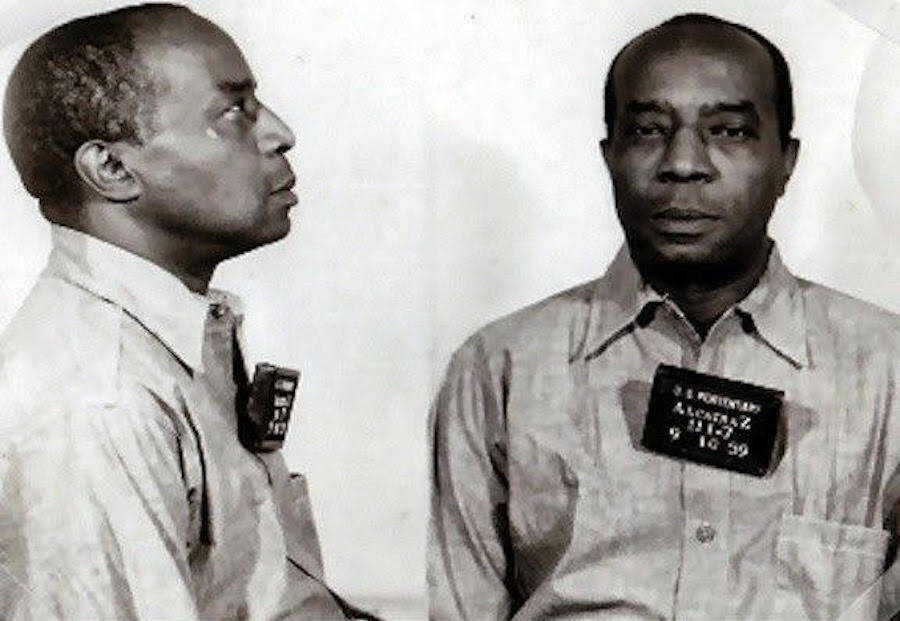
Public DomainThe Harlem Godfather at Alcatraz. Just a few years after Bumpy Johnson was released from this prison, he died of a heart attack.
With Bumpy Johnson as the Godfather of Harlem, anything that happened in the crime world of the neighborhood had to get his seal of approval first.
As Mayme Johnson wrote, “If you wanted to do anything in Harlem, anything at all, you’d better stop and see Bumpy because he ran the place. Want to open a number spot on the Avenue? Go see Bumpy. Thinking about converting your brownstone into a speakeasy? Check with Bumpy first.”
And if anyone didn’t come to see Bumpy first, they paid the price. Perhaps few paid that price as dearly as his rival Ulysses Rollins. As one chilling excerpt from Johnson’s biography reads:
“Bumpy spotted Rollins. He pulled out a knife and jumped on Rollins, and the two men rolled around on the floor for a few moments before Bumpy stood up and straightened his tie. Rollins remained on the floor, his face and body badly gashed, and one of his eyeballs hanging from the socket by ligaments. Bumpy calmly stepped over the man, picked up a menu and said he suddenly had a taste for spaghetti and meatballs.”
However, Johnson also had a soft side. Some even compared him to Robin Hood because of the way he used his money and power to help the impoverished communities in his neighborhood. He delivered gifts and meals to his neighbors in Harlem and even supplied turkey dinners on Thanksgiving and hosted a Christmas party every year.
As his wife noted, he was known to lecture younger generations about studying academics instead of crime — although he “always maintained a sense of humor about his brushes with the law.”
Johnson was also a fashionable man of the Harlem Renaissance. Known for his love of poetry, he got some of his poems published in Harlem magazines. And he had affairs with New York celebrities, such as the editor of Vanity Fair, Helen Lawrenson, and the singer and actress Lena Horne.
“He wasn’t a typical gangster,” wrote Frank Lucas, a notorious drug trafficker in Harlem in the 1960s and ’70s. “He worked in the streets but he wasn’t of the streets. He was refined and classy, more like a businessman with a legitimate career than most people in the underworld. I could tell by looking at him that he was a lot different from the people I saw in the streets.”
The Harlem Godfather’s Turbulent Final Years

Wikimedia CommonsAlcatraz Prison, where Bumpy Johnson served a sentence for drugs charges in the 1950s and ’60s.
But no matter how smoothly he ran his crime business, Johnson still spent his fair share of time in prison. In 1951, he received his longest sentence, a 15-year term for selling heroin that eventually saw him sent to Alcatraz.
Interestingly enough, the Harlem Godfather was eight years into his prison sentence in Alcatraz on June 11, 1962, when Frank Morris and Clarence and John Anglin made the only successful escape from the institution.
Some suspect that Johnson had something to do with the infamous escape. And unconfirmed reports allege that he used his mob connections to help the escapees secure a boat to San Francisco.
His wife theorized that he himself didn’t escape alongside them because of his desire to be a free man, rather than a fugitive.
And free he was — for a few years, at least.
Bumpy Johnson returned to Harlem following his release in 1963. And while he may have still had the love and respect of the neighborhood, it was no longer the same place that it was when he left it.
By that point, the neighborhood had largely fallen into disrepair as drugs had flooded the area (mostly thanks to the Mafia leaders with whom Johnson had once cooperated in years past).
In hopes of rehabilitating the neighborhood and advocating for its Black citizens, politicians and civil rights leaders drew attention to Harlem’s struggles. One leader was Bumpy Johnson’s old friend Malcolm X.

Wikimedia CommonsMalcolm X and Bumpy Johnson were once good friends.
Bumpy Johnson and Malcolm X had been friends since the 1940s — when the latter was still a street hustler. Now a powerful community leader, Malcolm X asked Bumpy Johnson to provide protection for him as his enemies in the Nation of Islam, with whom he’d just split, stalked him.
But Malcolm X soon decided that he shouldn’t be associating with a known criminal like Bumpy Johnson and had him ask his guards to stand down. Just weeks later, Malcolm X was assassinated by his enemies in Harlem.
Little did the Harlem Godfather know that his time was also running short — and he would soon be gone as well. However, when Bumpy Johnson died, his demise would prove to be far less brutal than Malcolm X’s death.
Five years after being released from the infamous prison, Bumpy Johnson died of a heart attack during the early hours of July 7, 1968. He lay in the arms of one of his closest friends, Junie Byrd, as he breathed his last. Some were shocked by the suddenness of how Bumpy Johnson died, while others were simply surprised that it had not been a violent demise.
As for Mayme, she reflected on the way Bumpy Johnson died as such: “Bumpy’s life may have been a violent and turbulent one, but his death was one that any Harlem sporting man would pray for — eating fried chicken at Wells Restaurant in the wee hours of the morning surrounded by childhood friends. It just can’t get better than that.”
Thousands of people attended Johnson’s funeral, including dozens of uniformed police officers who were stationed on the surrounding rooftops, shotguns in hand. “They must have thought that Bumpy was going to get up from the casket and start raising Hell,” Mayme wrote.
The Enduring Legacy Of Bumpy Johnson

EpixActor Forest Whitaker, who portrays Bumpy Johnson in Epix’s Godfather of Harlem.
In the years after Bumpy Johnson died, he remained an iconic figure in Harlem history. But despite his massive influence and power, the “Godfather of Harlem” has largely stayed out of the national public consciousness in ways that other infamous gangsters have not. So why is that?
Some believe that Johnson has been brushed off because he was a powerful Black man ruling an entire neighborhood of New York City during the mid-20th century. However, in recent decades, Johnson’s story has started to reach more people thanks to film and television.
Laurence Fishburne played a Johnson-inspired character in The Cotton Club, directed by Francis Ford Coppola. He also portrayed Bumpy Johnson himself in Hoodlum, “a goofy, historically suspect biopic in which the male lead delivered an even more inert performance,” according to writer Joe Queenan.
Most famous, perhaps, is the crime boss’ portrayal in American Gangster — a film that Mayme Johnson has refused to see.
According to her, Denzel Washington’s depiction of Frank Lucas was more fiction than fact. Lucas was not Johnson’s driver for more than a decade, and he was not present when Bumpy Johnson died. Lucas and Johnson actually had a falling out before he was sent to Alcatraz. As Mayme wrote, “That’s why we need more Black people writing books to tell the real history.”
More recently in 2019, Chris Brancato and Paul Eckstein created a series for Epix called Godfather of Harlem, which tells the story of the crime boss (played by Forest Whitaker) after he returned to Harlem from Alcatraz and lived out his final years in the neighborhood he once ruled.
Though Johnson’s story may have been cast aside by some in the years after his death, it’s clear that he will never be completely forgotten.
Now that you know more about the Harlem Godfather Bumpy Johnson, check out these images of the Harlem Renaissance. Then learn about Salvatore Maranzano, the man who created the American Mafia.





